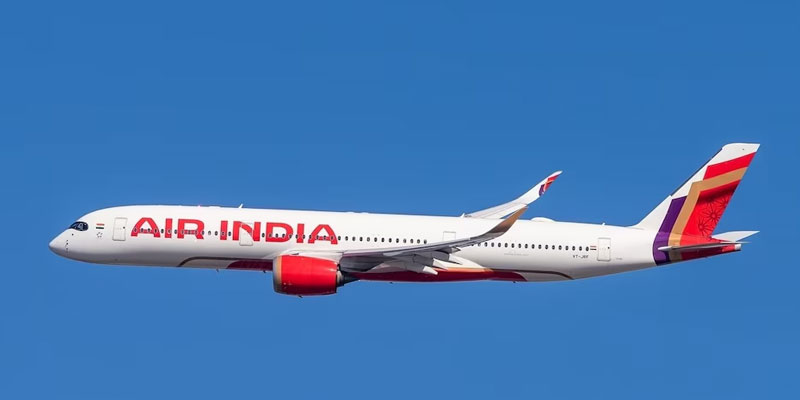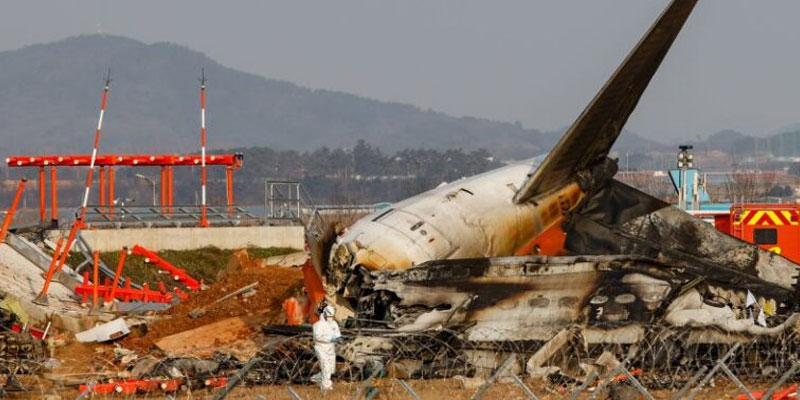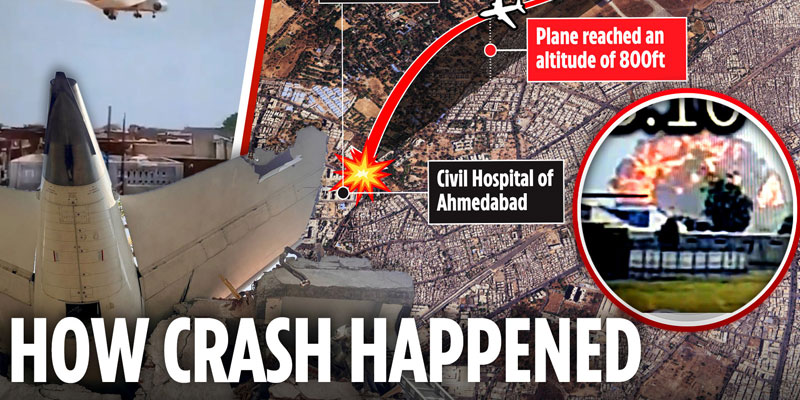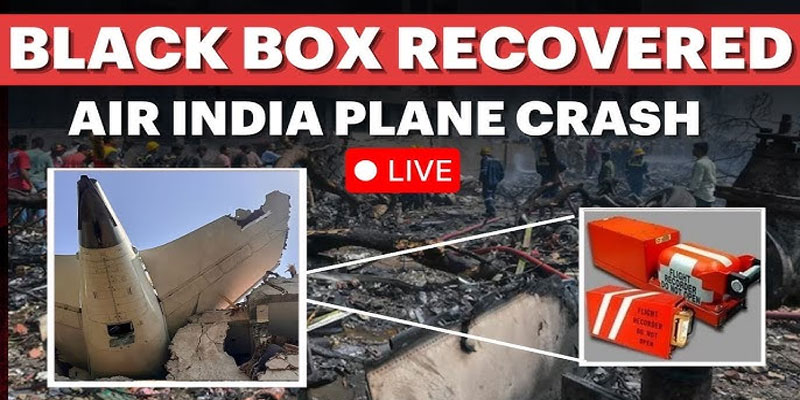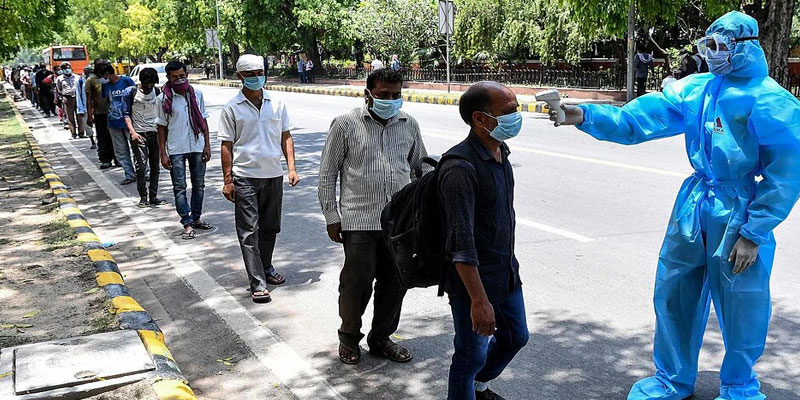Tragedy Over Ahmedabad
In a catastrophic incident that has stunned the aviation world, Air India Flight AI 171 crashed just minutes after taking off from Ahmedabad’s Sardar Vallabhbhai Patel International Airport on June 12, 2025. The Boeing 787-8 Dreamliner, en route to London Gatwick, lost contact with air traffic control shortly after departure and went down in the densely populated Meghani Nagar area, erupting in a massive fireball that lit up the city skyline.
Over 230 passengers and crew were on board. Preliminary reports confirm at least 40 fatalities, including residents on the ground. Rescue operations are ongoing, with the National Disaster Response Force, city fire brigades, and emergency medical services working round the clock to recover bodies, treat survivors, and control the blaze.
The aircraft issued a Mayday at approximately 625 feet before disappearing from radar. While the cause is under investigation, questions are already being raised about the aircraft’s Rolls-Royce Trent 1000 engines, previously criticized for reliability issues.
The Dreamliner’s Fall from Grace
The Boeing 787 Dreamliner, once considered a gold standard for modern aviation, has lost its untarnished safety reputation. Since its first commercial flight in 2011, the Dreamliner fleet—numbering over 1,600 aircraft globally—had not recorded a single fatal crash. That impeccable record came to a tragic end in Ahmedabad.
Air India, now operated by the Tata Group, released a statement expressing deep sorrow and pledged full cooperation with the Directorate General of Civil Aviation (DGCA) and international investigators. Boeing, for its part, confirmed awareness of the incident and said it was “actively assisting” the probe.
This is not only the first fatal Dreamliner accident—it’s also a symbolic blow to Boeing’s post-MAX recovery narrative, especially after years of quality assurance issues.
A Dream Built on Innovation
Launched in the early 2000s, the Dreamliner was Boeing’s response to a new era of aviation. Officially named the 787, it promised lower emissions, higher fuel efficiency, and greater passenger comfort. The aircraft’s composite materials made it lighter, while its advanced systems reduced maintenance demands.
The Dreamliner debuted commercially in 2011 and was heralded as a breakthrough in long-haul travel. Its three variants—787-8, 787-9, and 787-10—offered flexibility for different route structures, allowing airlines to expand direct international flights between previously unlinked cities.
Despite production hiccups, including battery fires early in its lifecycle and later engine corrosion problems, the 787 had remained free of fatal accidents—until now.
Past Incidents That Raised Alarms
Before today’s tragedy, the most serious safety incident involving a Dreamliner occurred in 2013, when an Ethiopian Airlines 787 caught fire while parked at London Heathrow due to a faulty emergency locator transmitter. Other incidents included inflight diversions due to engine wear and technical faults—but none resulted in casualties.
Rolls-Royce’s Trent 1000 engines, fitted on many Dreamliners including Air India’s, have been flagged in the past for premature wear and fuel efficiency problems. Boeing had issued multiple maintenance bulletins addressing these concerns, but no systemic failures had occurred—until now.
The AI 171 crash will likely reignite scrutiny of these engines, particularly if the investigation uncovers any link to mechanical or system failure during take-off.
Air India’s Long and Tragic Crash History
The crash of AI 171 adds a grim chapter to Air India’s legacy of aviation disasters:
Kozhikode (2020): An Air India Express Boeing 737, repatriating Indians from Dubai during the COVID-19 pandemic, overshot a rain-soaked tabletop runway. The crash killed 21 people, including both pilots.
Mangaluru (2010): Air India Express Flight 812 failed to stop on another treacherous tabletop runway and crashed into a valley, killing 158 out of 166 on board.
Kanishka Bombing (1985): One of the most horrific aviation terror attacks ever, Air India Flight 182 exploded mid-air off Ireland due to a bomb placed by Sikh extremists. All 329 people died.
Arabian Sea Crash (1978): Air India Flight 855 plunged into the sea moments after takeoff from Mumbai, likely due to instrument failure. All 213 aboard were killed.
Flight 171 (1976): Another crash soon after take-off from Mumbai, when a Caravelle jet caught fire mid-air. Ninety-five lives were lost.
Mont Blanc Crashes (1966 and 1950): Two separate Air India flights—Flight 101 in 1966 and Flight 245 in 1950—crashed into the French Alps in near-identical locations. Both disasters claimed over 100 lives each and included high-profile victims like physicist Homi J. Bhabha.
This tragic lineage underscores the complex safety challenges Air India has grappled with—ranging from technical failures to terrorism, weather, and infrastructure issues.
Why This Crash Will Have Global Ripples
The implications of the AI 171 crash stretch beyond India. Boeing now faces renewed questions about quality control, already under global scrutiny after previous issues with the 737 MAX and recent production delays. Airlines worldwide operate Dreamliners as key assets on international routes. Public confidence, regulatory standards, and maintenance regimes could all face overhaul if systemic faults are discovered.
Furthermore, Tata Group’s ongoing efforts to modernize and restore Air India’s image will likely suffer. The airline had recently unveiled plans for fleet upgrades, expanded international routes, and service improvements—initiatives now clouded by catastrophe.
Aviation’s Fragile Pact with Safety
The AI 171 tragedy is a somber reminder of the delicate balance in aviation between innovation and vigilance. The Dreamliner was a symbol of what modern engineering could achieve. But even the most sophisticated systems can fail—with devastating consequences.
As investigators comb through wreckage and data recorders in the days ahead, the world will look for answers—and accountability. For Air India, Boeing, and the families affected, this is more than a statistical anomaly. It is a human loss with lasting echoes.
In a world where the miracle of flight has become routine, AI 171 reminds us that safety is never a given, and every take-off carries the weight of trust.
And today, that trust has been profoundly shaken.
(With agency inputs)







